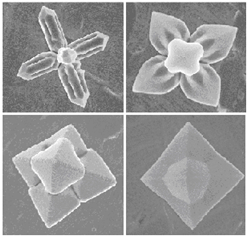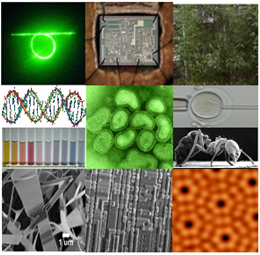Two leading scholars in the field of nanotechnology have been invited to deliver public lectures organized by the Research Grants Council with the Hong Kong Science Museum on 8 October 2011 (Saturday). Details of the lectures are as follows:
| Topic | Speaker | Time |
|---|---|---|
| Nanomechanical Behaviour of Materials and Biological Tissues | Professor A.H.W. Ngan (Kingboard Professor in Materials Engineering, Department of Mechanical Engineering, The University of Hong Kong) | 2:30 pm - 3:30 pm |
| Nanotechnology: Science and Application | Professor Aaron Ho-pui Ho (Professor, Department of Electronic Engineering, The Chinese University of Hong Kong) | 3:30 pm - 4:30 pm |
Venue: Lecture Hall, Hong Kong Science
Museum (Location
Map)
Language: Cantonese
Free admission on a first-come, first-served
basis.
For enquires, please contact us at 2524
3987 or rgc@ugc.edu.hk.
First Session
Topic: Nanomechanical Behaviour of Materials and Biological Tissues
Speakers: Professor A.H.W. Ngan
Time: 8 October 2011 (Saturday) 2:30pm - 3:30pm
Brief introduction:
Successful applications of nanotechnology often arise from the unique properties of materials when their physical size shrinks to the submicron, and usually nanometer, length scale. The realization of nanotechnology, therefore, hinges upon on our ability to fabricate and manipulate such small-sized materials, as well as to characterize their properties. The successful development of scanning probe microscopy and related techniques has enabled these operations on nano-sized objects to be performed, and therefore, directly triggered the birth of Nanotechnology. This talk will describe the development of nanomechanical and related techniques, including atomic force microscopy, nanoindentation, optical tweezers and so on, and their application to a number of problems in both physical and biological sciences. In physical applications, understanding the properties of synthetic materials of micron to nanometric sizes is important in the design and operation of micron-scale devices and systems. The focus is therefore on understanding how small material volumes differ from bulk counterparts, in terms of their strength and deformation under mechanical loading. In biomedical sciences, diseases can be intricately linked to the mechanical properties of the relevant cells and other, often nanoscale, protein building blocks of life. The properties of cornea, dental tissues, and antibody-antigen protein interactions will be discussed as examples to show how the mechanical and other physical properties of the relevant small building blocks of life can be related to the relevant diseases and disorders. |
 |
Second Session
Topic: Nanotechnology: Science and Application
Speaker: Professor Aaron Ho-pui Ho
Time: 8 October 2011 (Saturday) 3:30pm - 4:30pm
Brief introduction:
Nano – literally means “one-thousand-millionth of a meter” or “the length equivalent to four to five atoms” – possibly has been widely taken as an acronym for hi-tech or revolutionary, or even anything that is supposed to improve life nowadays. So how much do we know about the different faces of nanotechnology? What does it do? How does it work? What can it do? Why is it so important to mankind? What does it involve? What are the opportunities and threats? This lecture aims to answer these questions in a simplistic approach appropriate for the general public. It is meant to be educational and to arouse interest of the community, so everyone is welcome. The lecture theme includes: key concepts behind nanotechnology, important functional features of nano-sized objects, nanotechnology as a platform for basic sciences, high performance materials, electronics and medicine, common products from nanotechnology, examples of nanotechnology products. The lecture ends with a few insights on the prospects, opportunities and threats of nanotechnology. There will also be some tips on choosing the right “nano” products. |
 |